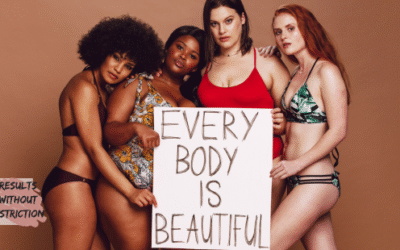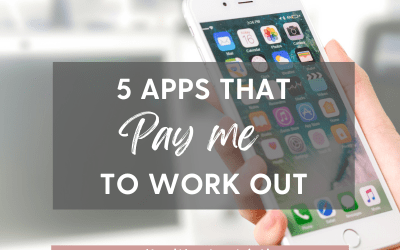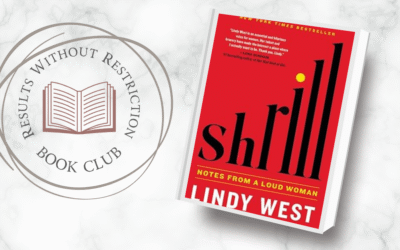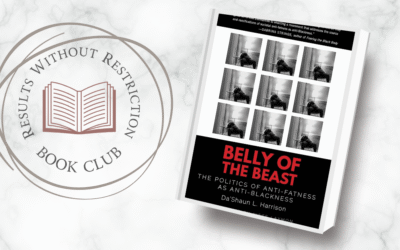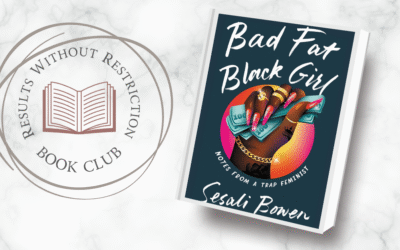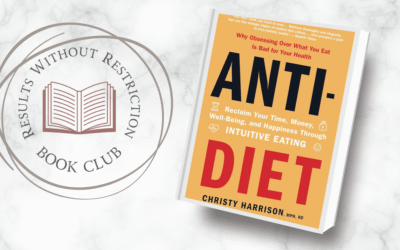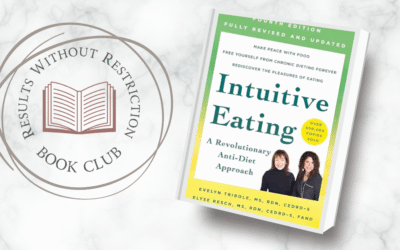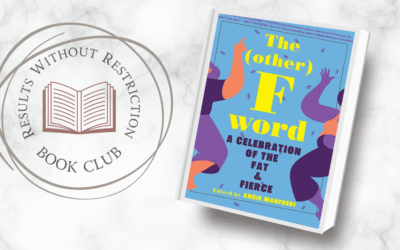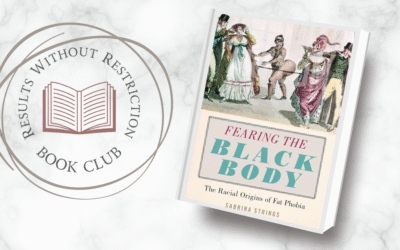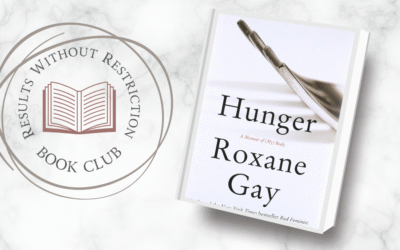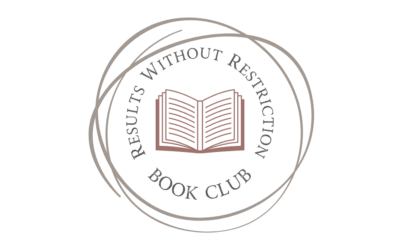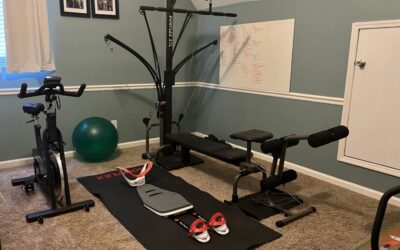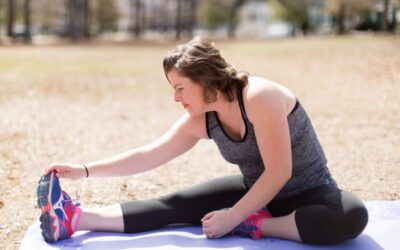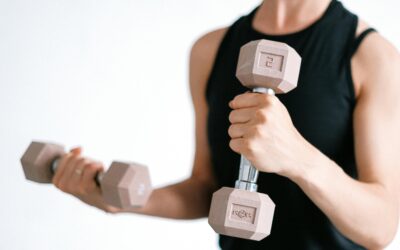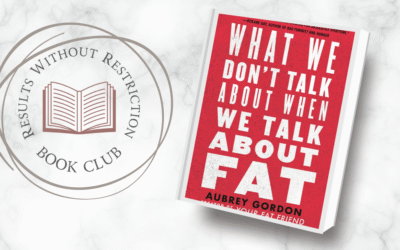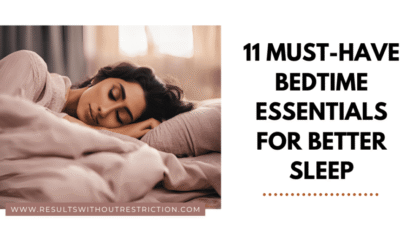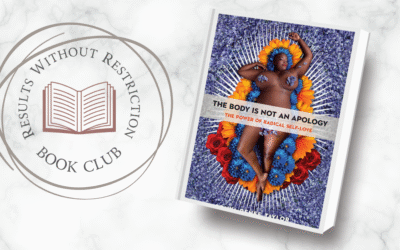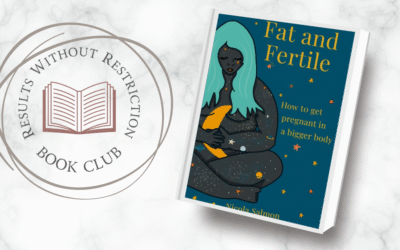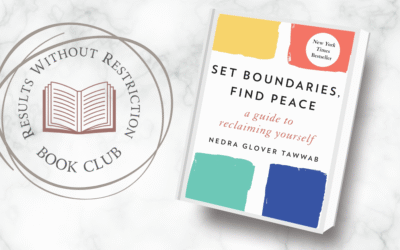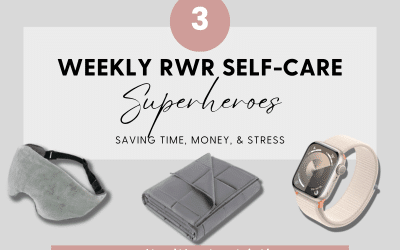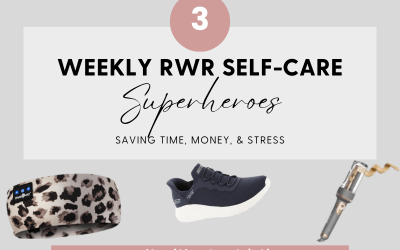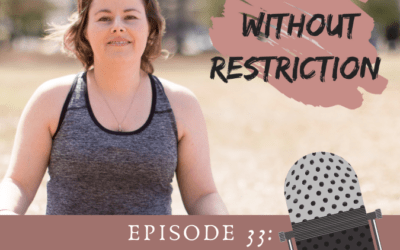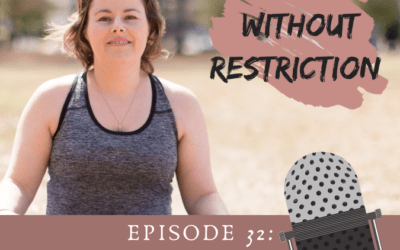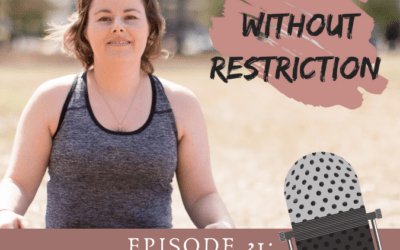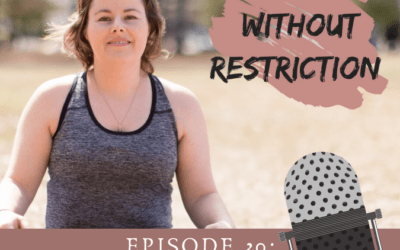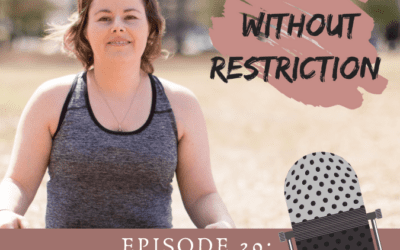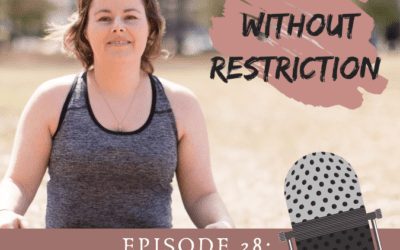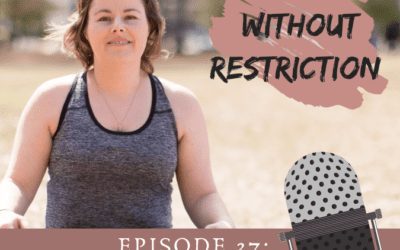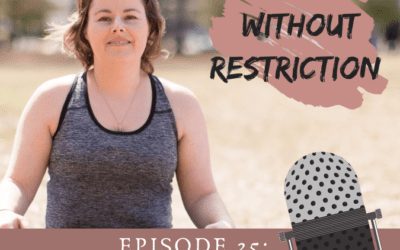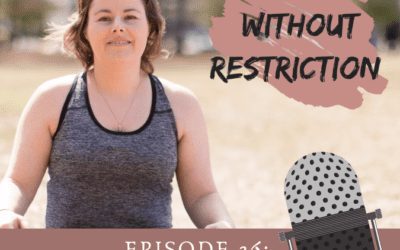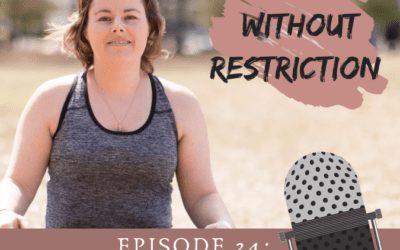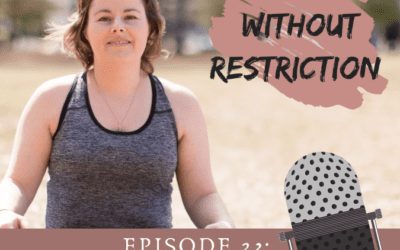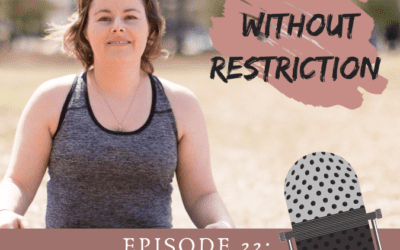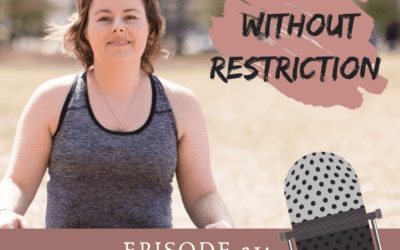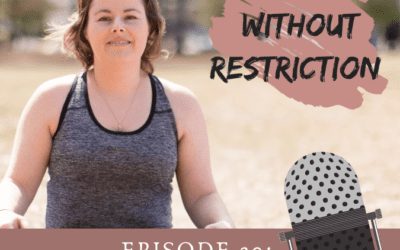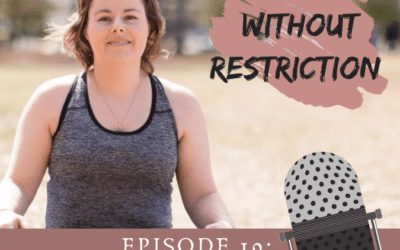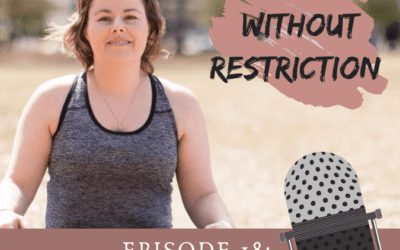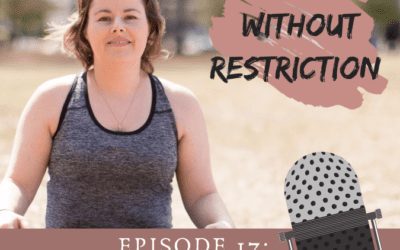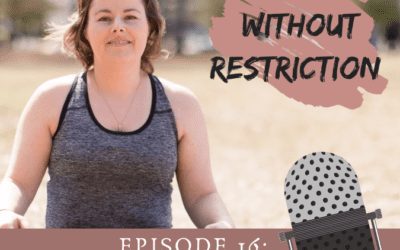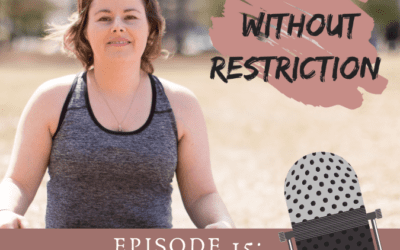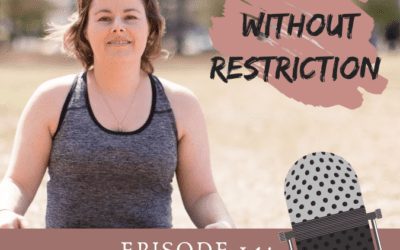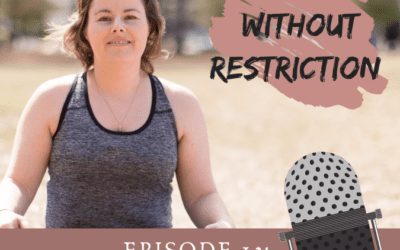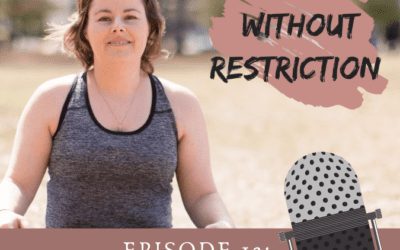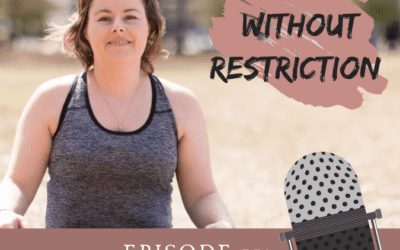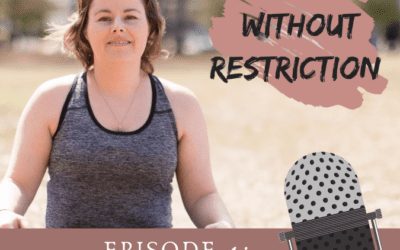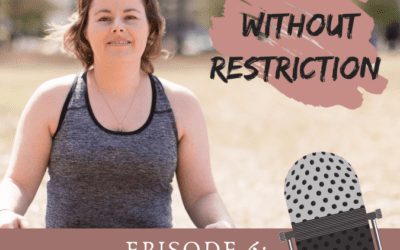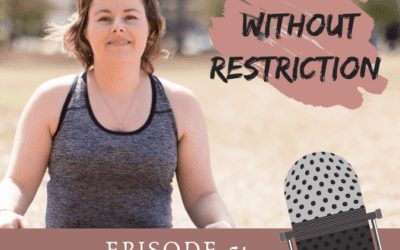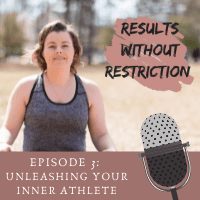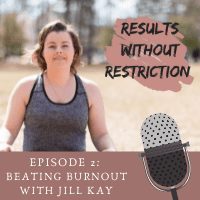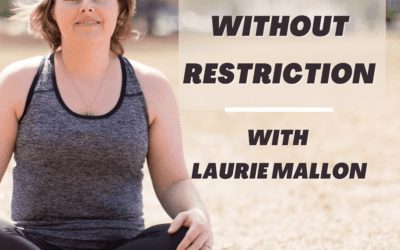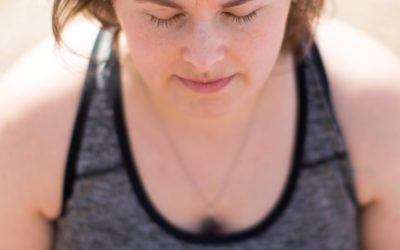1. Interrupt the Inner Critic with Curiosity, Not Judgment2. Set Boundaries Around Negative Body...
5 Legit Apps That Pay Me to Work Out and Motivate Me to Move
Movement, Habits & Lifestyle, Stress Management
Yes, there really are apps that pay me to work out! I tested the most popular ones, tracked my...
Why Ditching Diet Mentality is the First Step Toward Food Freedom
Body Confidence, Ditching Diet Culture
This post contains affiliate links. Before you can truly embrace intuitive eating, you have to let...
4 Key Things to Know about Gentle Nutrition and How It Fits Into Intuitive Eating
Gentle nutrition is the final principle of intuitive eating and often the most misunderstood. I...
6 Surprising Truths About Intuitive Eating Basics (Before You Dismiss It)
This post contains affiliate links If you’ve ever rolled your eyes at the idea of intuitive...
RWR Book Club: Shrill
This post contains affiliate links. This month’s selection for RWR Book Club Shrill by Lindy West...
RWR Book Club: Belly of the Beast: The Politics of Anti-Fatness as Anti-Blackness
This post contains affiliate links. This month’s pick for the Results Without Restriction (RWR)...
RWR Book Club: Bad Fat Black Girl: Notes from a Trap Feminist by Sesali Bowen
This post contains affiliate links. In this selection for the RWR Book Club Bad Fat Black Girl:...
RWR Book Club Anti-Diet
This post contains affiliate links. In this selection of the RWR book club Anti-Diet: Reclaim Your...
RWR Book Club – Intuitive Eating
This post contains affiliate links.This month's selection for RWR Book Club -Intuitive Eating: A...
RWR Book Club – The (Other) F Word
This post contains affiliate links. RWR Book Club - The (Other) F Word: Book SummaryThis Book Is...
RWR Book Club – Fearing the Black Body
This post contains affiliate links.This month's selection for RWR Book Club Fearing the Black Body...
RWR Book Club Selection – Hunger: A Memoir of (My) Body by Roxane Gay
This post contains affiliate links. This month’s selection for the RWR Book Club Hunger: A Memoir...
RWR Book Club: 12-Month Reading List
This post contains affiliate links. Welcome to the Results Without Restriction Book Club — a space...
How to Set Up a Fully Functional Home Gym and Workout Space
Cardio, Flexibility, Movement, Strength Training
This post may contain affiliate links Imagine waking up, slipping into your workout clothes, and...
My 6 Favorite Workout Accessories for Strength Training at Home
This blog post contains affiliate links. If you’re in the process of rebuilding your relationship...
Strength Training for Women: The Time-saving Push/Pull/Legs Split Workout
Dramatic? Yes. But if you're like me (a woman of a certain age) chances are you've been fed years...
RWR Book Club What We Don’t Talk About When We Talk About Fat
This post contains affiliate links. This month’s selection for RWR Book Club What We Don’t Talk...
11 Must-have Bedtime Essentials to Sleep Better Tonight
This page may contains affiliate links, meaning I receive a commission if you decide to make a...
RWR Book Club The Body Is Not an Apology: The Power of Radical Self-Love
This post contains affiliate links. This month’s selection for RWR Book Club The Body Is Not an...
RWR Book Club Fat and Fertile
This post contains affiliate links. This month’s selection for RWR Book Club Fat and Fertile by...
RWR Book Club Set Boundaries Find Peace: A Guide to Reclaiming Yourself
This post contains affiliate links. This month’s selection for RWR Book Club Set Boundaries, Find...
Self-care Super Heroes
Self-Care & Boundaries, Stress Management
This page may include affiliate links Weighted BlanketWeighted Sleep MaskApple Watch Sleep...
More Self-care Super Heroes
This page may include affiliate links InfinitiPro Curling IronSkechers Step-in ShoesHeadband...
My Sleep Challenge: Part 2 My 30-Day Sleep Challenge Results with Christine Meyer
Key Takeaways:Quotes:Resources MentionedAbout Sleep Coach Christine Meyer: Connect...
My Sleep Challenge – Part 1: My Sleep Smart Strategy Session with Christine Meyer
Key Takeaways: Consistency is key when it comes to establishing a healthy sleep...
Approaching Dry January with Curiosity – The Sober Nutritionist, Teri Patterson
Key Takeaways: Growing Awareness: The awareness and participation in Dry January have...
The Healing Power of Yoga with Tashya Knight
In this episode 'The Healing Power of yoga' Tashya Knight, certified health educator, health...
Celebrating Her Recovery from Eating Disorders Using Intuitive Eating
CW: as the title implies, this episode describes a guest's lifelong struggle with eating disorders...
Best of Results Without Restriction 2023
Best of Results Without Restriction
The results are in! We asked, you answered! We've wrapped up our first...
Realistic & Holistic Wellness with Megan Caldwell
Realistic & holistic wellness with Megan Caldwell, personal trainer and health coach, who...
Managing Stress and Anxiety with Kim Darroch, Certified Health Coach
VIEW THE TRANSCRIPT In this episode I sit down with certified health coach...
Embracing the Highs and Lows in Life with a Growth Mindset with
In this episode I chat with Kristen Koeller who is an ACE Certified health...
Midlife, menopause, and mindfulness with Tanya Stricek
In this episode I chat with Tanya Stricek, the Mindful Nutritionist, a midlife health...
Undo Your Diet Mindset with Shanique Allen
Ready to Undo your diet mindset? In this episode I chat with Nourishment Strategist & Mindset...
Resolutions Without Restriction
Happy New Year! You know.... that time of year when many of us take a moment...
Intuitive Eating with Sarah Burby
Grab Sarah's free gift for RWR Podcast listeners... Intuitive Eating: Five Myths...
Exploring Your Relationship with Alcohol
The holidays are once again upon us… a time to eat, drink, and be merry! But...
Incorporating Rest into Your Sustainable Self-care Practice
In this episode I'm talking with Rest Coach, Anastasiya Rutus, who explains...
Migraine Freedom with Debbie Waidl
In this episode I talk to Debbie Waidl, a Migraine Specialist certified...
Size Inclusive Personal training with Shannon Hennig
In this episode I chat with personal trainer, Shannon Hennig, an online...
Meal Planning Made Simple with Kare Maryn
In this episode I sit down with Kitchen Coach, Kare Maryn, who's all about...
Joy is in the Now Place with Rochelle Asberry
In this episode I chat with health and wellness coach, Rochelle Asberry, who...
13 Points of Wellness with Tashya Knight
In this episode I chat with certified health coach and yoga teacher, Tashya...
Taking the Scary Out of Strength Training With Kathryn Blaze
In this episode I'm chatting with certified Kettlebell expert, Kathryn Blaze....
From Foggy to Focused with Christine Meyer
In this episode I'm chatting with ACE-certified Health Coach and Health Education...
Giving Your Gut a Makeover with Beccy Escobedo
In this episode I chat with Beccy Escobedo, holistic wellness coach and gut wellness...
7 Powerful Mindset Shifts to Build Healthy Habits That Last – with Coach Renee Bellinger
What if the biggest obstacle to a healthier lifestyle isn’t your willpower—but your...
Living Pain-free with Movement Coach, Jacqueline Gikow
VIEW TRANSCRIPT In this episode I'm chatting with certified Movement Coach...
Eat Like a CEO with Sarah Knight
In this episode I'm chatting with Sarah Knight, who is a holistic nutritionist and...
Getting off the Diet Rollercoaster with Intuitive Eating
This page may contains affiliate links, meaning I receive a commission if you decide...
Setting and Reaching Athletic Goals with Carrie Jo Bradley
VIEW TRANSCRIPT In this episode I'm chatting with Carrie Jo Bradley, personal...
Bouncing Back from Burnout with Jill Kay
VIEW THE TRANSCRIPT In this episode I chat with Functional...
Welcome to the RWR Podcast
Introducing the Results Without Restriction Podcast! The show where RESULTS...
4 Steps to Create a Life-Changing Meditation Practice
Stress Management, Health and Wellness
Meditation can be a life-changing practice if you struggle with stress or anxiety. Meditation has...

